Cut and Compare: End-To-End Offline Signature Verification Network
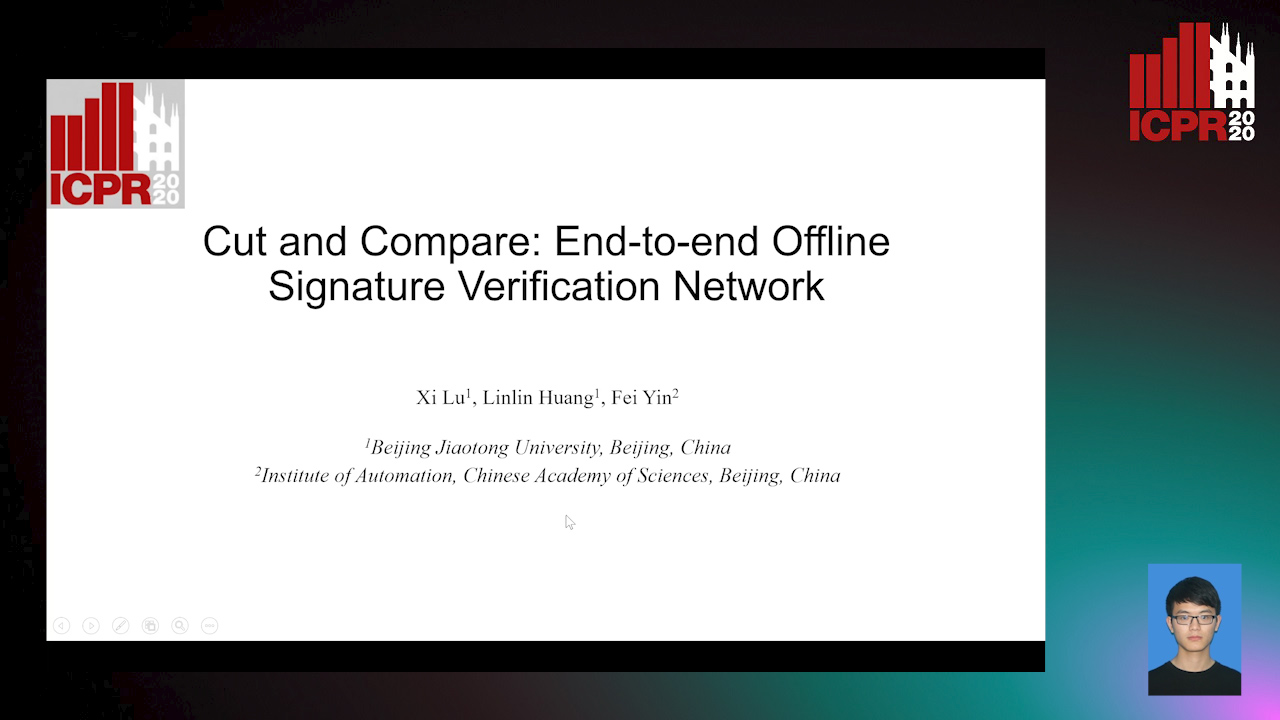
Auto-TLDR; An End-to-End Cut-and-Compare Network for Offline Signature Verification
Similar papers
Learning Metric Features for Writer-Independent Signature Verification Using Dual Triplet Loss
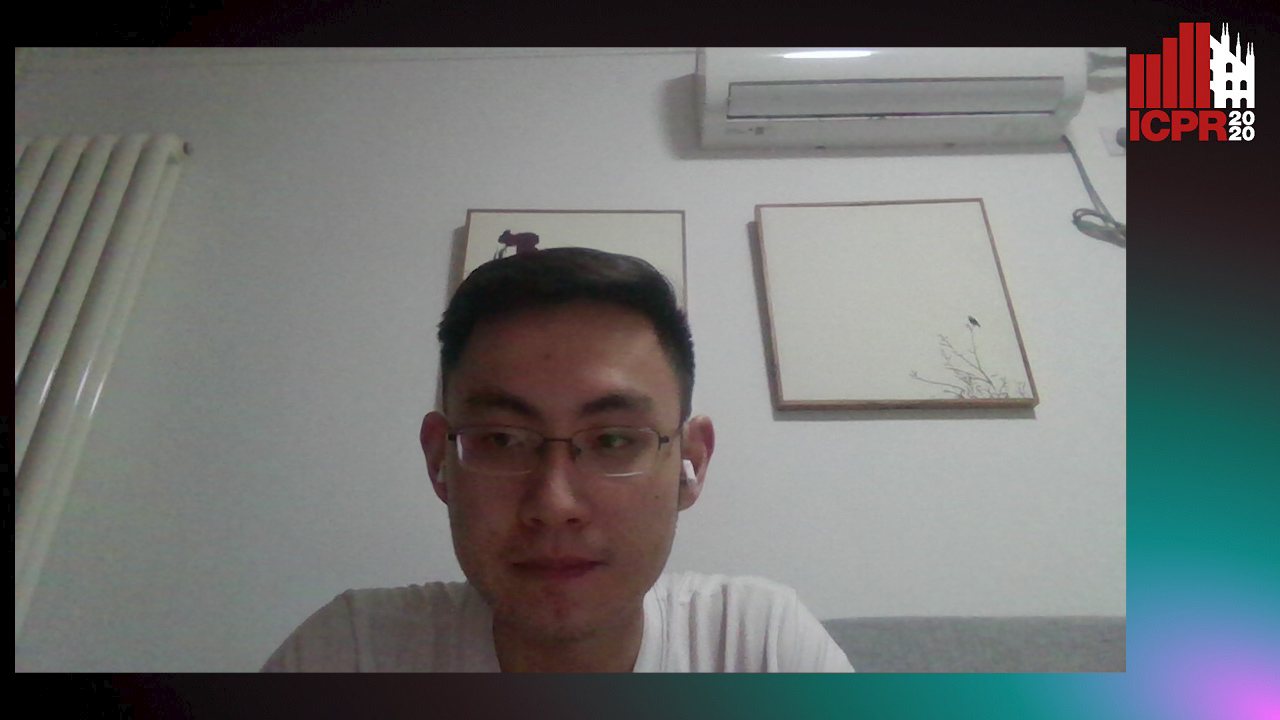
Auto-TLDR; A dual triplet loss based method for offline writer-independent signature verification
Total Whitening for Online Signature Verification Based on Deep Representation
Xiaomeng Wu, Akisato Kimura, Kunio Kashino, Seiichi Uchida

Auto-TLDR; Total Whitening for Online Signature Verification
Abstract Slides Poster Similar
An Investigation of Feature Selection and Transfer Learning for Writer-Independent Offline Handwritten Signature Verification
Victor Souza, Adriano Oliveira, Rafael Menelau Oliveira E Cruz, Robert Sabourin

Auto-TLDR; Overfitting of SigNet using Binary Particle Swarm Optimization
Abstract Slides Poster Similar
Writer Identification Using Deep Neural Networks: Impact of Patch Size and Number of Patches
Akshay Punjabi, José Ramón Prieto Fontcuberta, Enrique Vidal

Auto-TLDR; Writer Recognition Using Deep Neural Networks for Handwritten Text Images
Abstract Slides Poster Similar
Watch Your Strokes: Improving Handwritten Text Recognition with Deformable Convolutions
Iulian Cojocaru, Silvia Cascianelli, Lorenzo Baraldi, Massimiliano Corsini, Rita Cucchiara

Auto-TLDR; Deformable Convolutional Neural Networks for Handwritten Text Recognition
Abstract Slides Poster Similar
Attentive Hybrid Feature Based a Two-Step Fusion for Facial Expression Recognition
Jun Weng, Yang Yang, Zichang Tan, Zhen Lei

Auto-TLDR; Attentive Hybrid Architecture for Facial Expression Recognition
Abstract Slides Poster Similar
Online Trajectory Recovery from Offline Handwritten Japanese Kanji Characters of Multiple Strokes
Hung Tuan Nguyen, Tsubasa Nakamura, Cuong Tuan Nguyen, Masaki Nakagawa
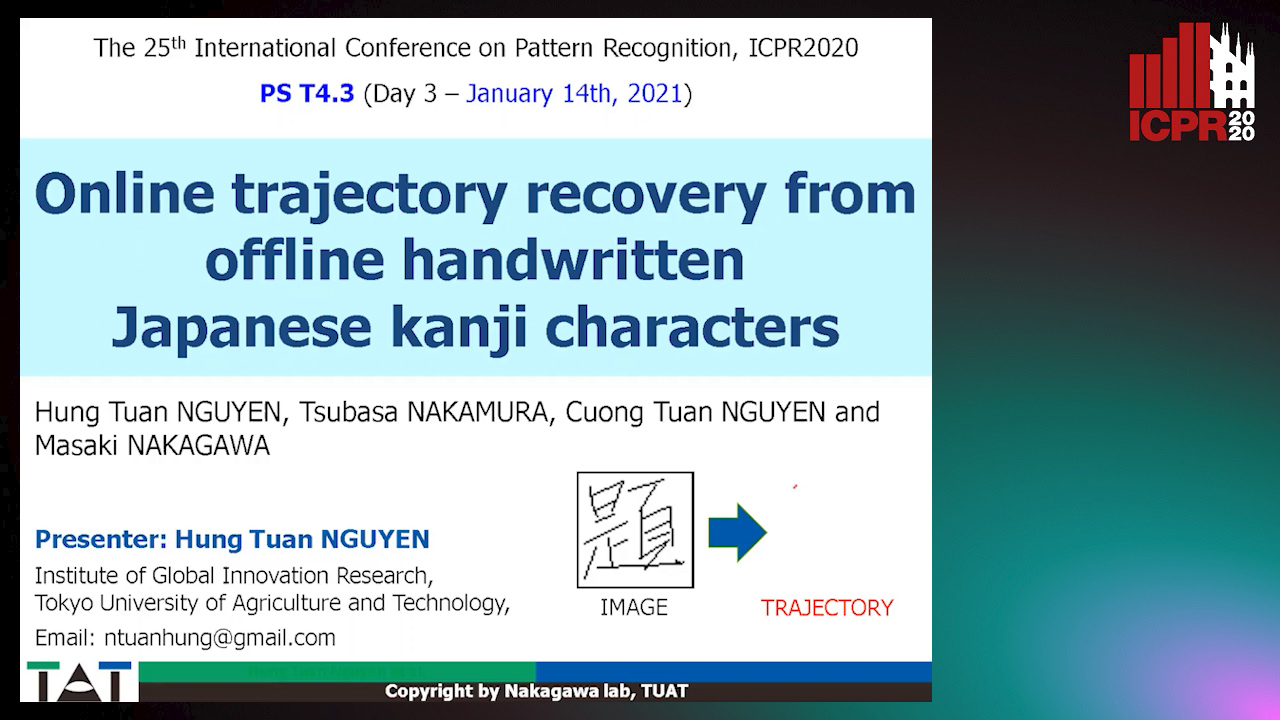
Auto-TLDR; Recovering Dynamic Online Trajectories from Offline Japanese Kanji Character Images for Handwritten Character Recognition
Abstract Slides Poster Similar
One-Shot Representational Learning for Joint Biometric and Device Authentication

Auto-TLDR; Joint Biometric and Device Recognition from a Single Biometric Image
Abstract Slides Poster Similar
2D License Plate Recognition based on Automatic Perspective Rectification
Hui Xu, Zhao-Hong Guo, Da-Han Wang, Xiang-Dong Zhou, Yu Shi

Auto-TLDR; Perspective Rectification Network for License Plate Recognition
Abstract Slides Poster Similar
Rotation Invariant Aerial Image Retrieval with Group Convolutional Metric Learning
Hyunseung Chung, Woo-Jeoung Nam, Seong-Whan Lee

Auto-TLDR; Robust Remote Sensing Image Retrieval Using Group Convolution with Attention Mechanism and Metric Learning
Abstract Slides Poster Similar
Free-Form Image Inpainting Via Contrastive Attention Network
Xin Ma, Xiaoqiang Zhou, Huaibo Huang, Zhenhua Chai, Xiaolin Wei, Ran He

Auto-TLDR; Self-supervised Siamese inference for image inpainting
Documents Counterfeit Detection through a Deep Learning Approach
Darwin Danilo Saire Pilco, Salvatore Tabbone

Auto-TLDR; End-to-End Learning for Counterfeit Documents Detection using Deep Neural Network
Abstract Slides Poster Similar
Attention-Based Deep Metric Learning for Near-Duplicate Video Retrieval
Kuan-Hsun Wang, Chia Chun Cheng, Yi-Ling Chen, Yale Song, Shang-Hong Lai

Auto-TLDR; Attention-based Deep Metric Learning for Near-duplicate Video Retrieval
Multi-Label Contrastive Focal Loss for Pedestrian Attribute Recognition
Xiaoqiang Zheng, Zhenxia Yu, Lin Chen, Fan Zhu, Shilong Wang

Auto-TLDR; Multi-label Contrastive Focal Loss for Pedestrian Attribute Recognition
Abstract Slides Poster Similar
Global Context-Based Network with Transformer for Image2latex
Nuo Pang, Chun Yang, Xiaobin Zhu, Jixuan Li, Xu-Cheng Yin

Auto-TLDR; Image2latex with Global Context block and Transformer
Abstract Slides Poster Similar
Human or Machine? It Is Not What You Write, but How You Write It
Luis Leiva, Moises Diaz, M.A. Ferrer, Réjean Plamondon
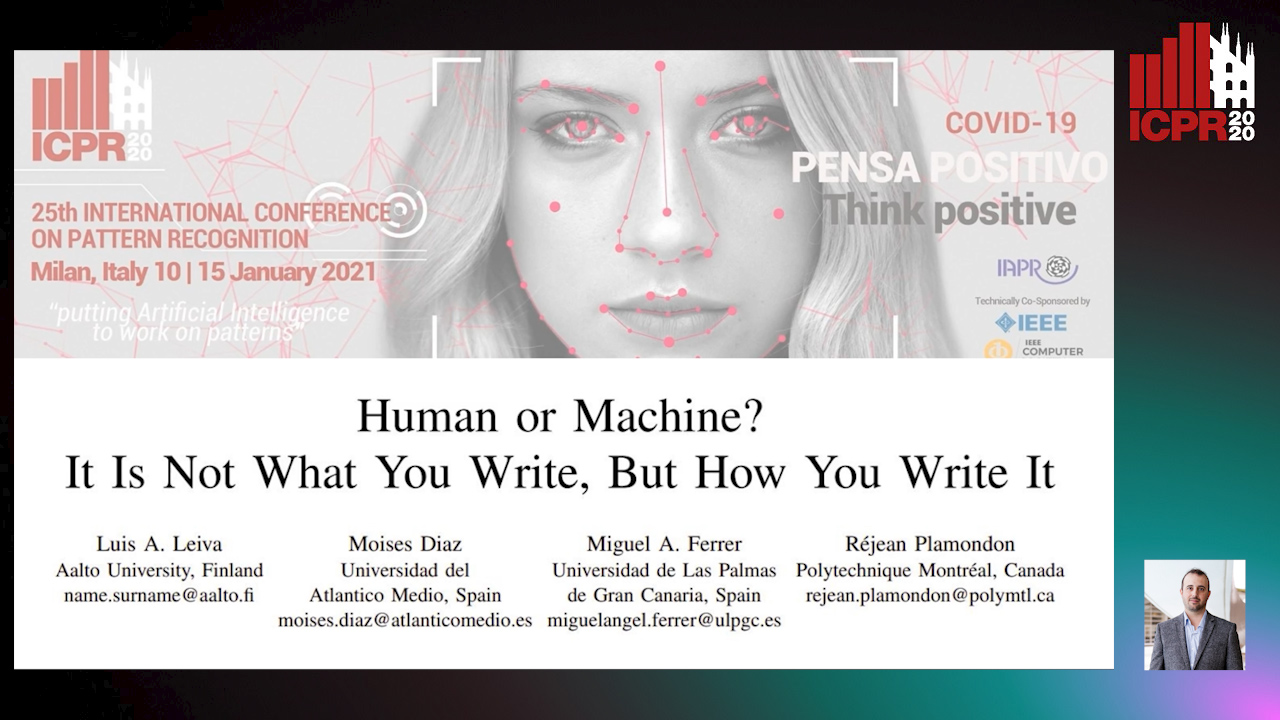
Auto-TLDR; Behavioral Biometrics via Handwritten Symbols for Identification and Verification
Abstract Slides Poster Similar
Recursive Recognition of Offline Handwritten Mathematical Expressions
Marco Cotogni, Claudio Cusano, Antonino Nocera

Auto-TLDR; Online Handwritten Mathematical Expression Recognition with Recurrent Neural Network
Abstract Slides Poster Similar
IBN-STR: A Robust Text Recognizer for Irregular Text in Natural Scenes
Xiaoqian Li, Jie Liu, Shuwu Zhang

Auto-TLDR; IBN-STR: A Robust Text Recognition System Based on Data and Feature Representation
ReADS: A Rectified Attentional Double Supervised Network for Scene Text Recognition
Qi Song, Qianyi Jiang, Xiaolin Wei, Nan Li, Rui Zhang

Auto-TLDR; ReADS: Rectified Attentional Double Supervised Network for General Scene Text Recognition
Abstract Slides Poster Similar
Attentive Part-Aware Networks for Partial Person Re-Identification
Lijuan Huo, Chunfeng Song, Zhengyi Liu, Zhaoxiang Zhang

Auto-TLDR; Part-Aware Learning for Partial Person Re-identification
Abstract Slides Poster Similar
ConvMath : A Convolutional Sequence Network for Mathematical Expression Recognition
Zuoyu Yan, Xiaode Zhang, Liangcai Gao, Ke Yuan, Zhi Tang

Auto-TLDR; Convolutional Sequence Modeling for Mathematical Expressions Recognition
Abstract Slides Poster Similar
Cross-Lingual Text Image Recognition Via Multi-Task Sequence to Sequence Learning
Zhuo Chen, Fei Yin, Xu-Yao Zhang, Qing Yang, Cheng-Lin Liu

Auto-TLDR; Cross-Lingual Text Image Recognition with Multi-task Learning
Abstract Slides Poster Similar
A Multi-Head Self-Relation Network for Scene Text Recognition
Zhou Junwei, Hongchao Gao, Jiao Dai, Dongqin Liu, Jizhong Han

Auto-TLDR; Multi-head Self-relation Network for Scene Text Recognition
Abstract Slides Poster Similar
Dual-Attention Guided Dropblock Module for Weakly Supervised Object Localization
Junhui Yin, Siqing Zhang, Dongliang Chang, Zhanyu Ma, Jun Guo

Auto-TLDR; Dual-Attention Guided Dropblock for Weakly Supervised Object Localization
Abstract Slides Poster Similar
Recognizing Bengali Word Images - A Zero-Shot Learning Perspective
Sukalpa Chanda, Daniël Arjen Willem Haitink, Prashant Kumar Prasad, Jochem Baas, Umapada Pal, Lambert Schomaker

Auto-TLDR; Zero-Shot Learning for Word Recognition in Bengali Script
Abstract Slides Poster Similar
Local Attention and Global Representation Collaborating for Fine-Grained Classification
He Zhang, Yunming Bai, Hui Zhang, Jing Liu, Xingguang Li, Zhaofeng He
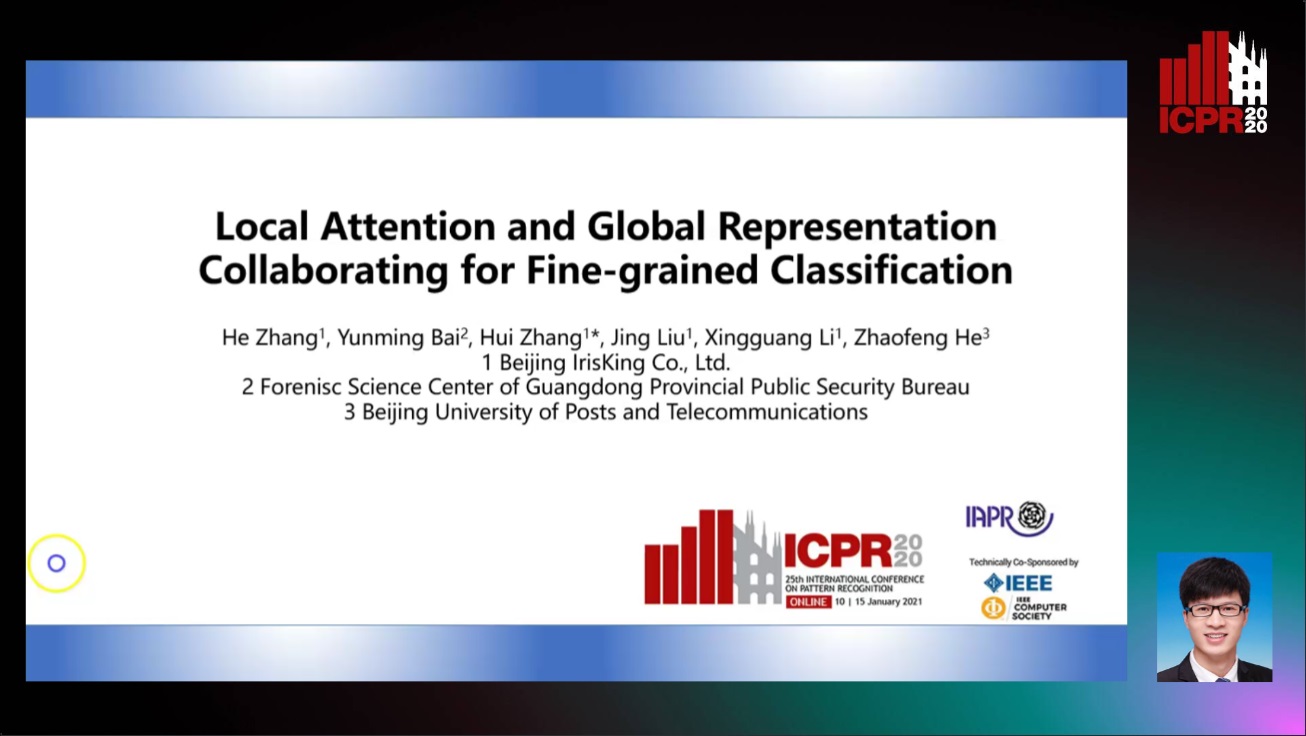
Auto-TLDR; Weighted Region Network for Cosmetic Contact Lenses Detection
Abstract Slides Poster Similar
Generalized Local Attention Pooling for Deep Metric Learning
Carlos Roig Mari, David Varas, Issey Masuda, Juan Carlos Riveiro, Elisenda Bou-Balust

Auto-TLDR; Generalized Local Attention Pooling for Deep Metric Learning
Abstract Slides Poster Similar
3D Facial Matching by Spiral Convolutional Metric Learning and a Biometric Fusion-Net of Demographic Properties
Soha Sadat Mahdi, Nele Nauwelaers, Philip Joris, Giorgos Bouritsas, Imperial London, Sergiy Bokhnyak, Susan Walsh, Mark Shriver, Michael Bronstein, Peter Claes

Auto-TLDR; Multi-biometric Fusion for Biometric Verification using 3D Facial Mesures
Stroke Based Posterior Attention for Online Handwritten Mathematical Expression Recognition
Changjie Wu, Qing Wang, Jianshu Zhang, Jun Du, Jiaming Wang, Jiajia Wu, Jin-Shui Hu

Auto-TLDR; Posterior Attention for Online Handwritten Mathematical Expression Recognition
Abstract Slides Poster Similar
Self and Channel Attention Network for Person Re-Identification
Asad Munir, Niki Martinel, Christian Micheloni

Auto-TLDR; SCAN: Self and Channel Attention Network for Person Re-identification
Abstract Slides Poster Similar
Handwritten Signature and Text Based User Verification Using Smartwatch
Raghavendra Ramachandra, Sushma Venkatesh, Raja Kiran, Christoph Busch
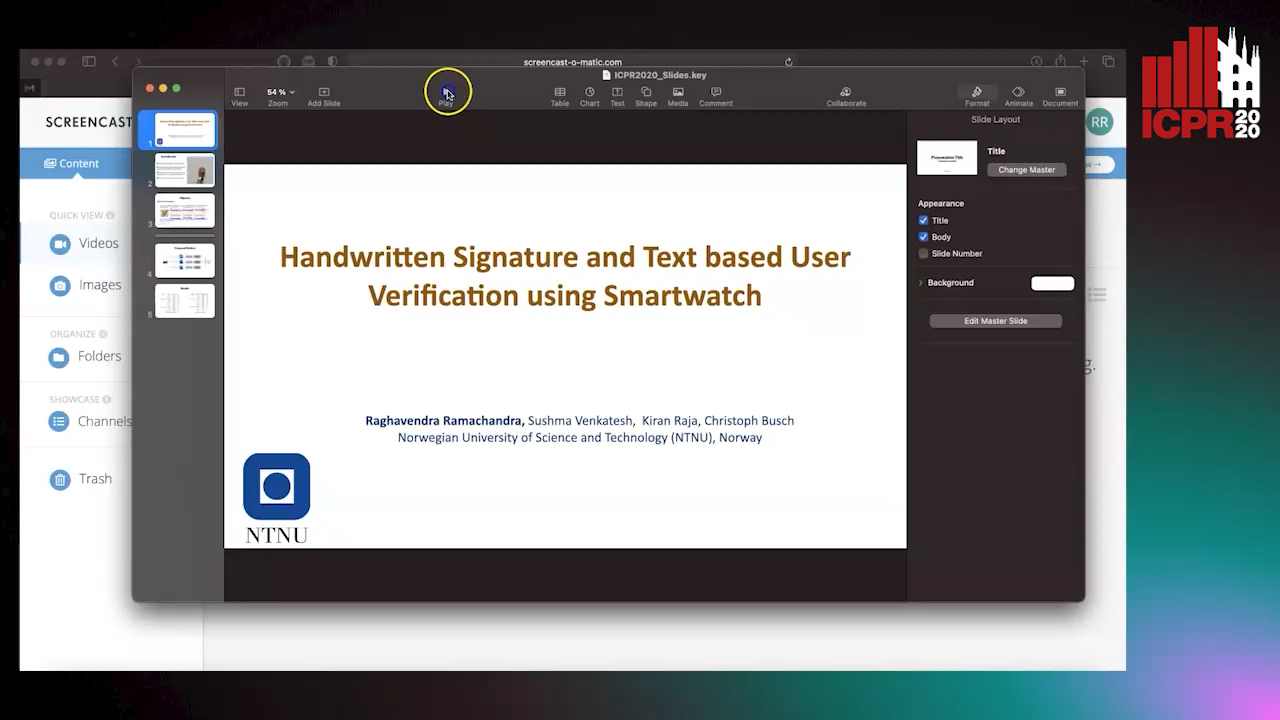
Auto-TLDR; A novel technique for user verification using a smartwatch based on writing pattern or signing pattern
Abstract Slides Poster Similar
TAAN: Task-Aware Attention Network for Few-Shot Classification

Auto-TLDR; TAAN: Task-Aware Attention Network for Few-Shot Classification
Abstract Slides Poster Similar
A Transformer-Based Radical Analysis Network for Chinese Character Recognition
Chen Yang, Qing Wang, Jun Du, Jianshu Zhang, Changjie Wu, Jiaming Wang
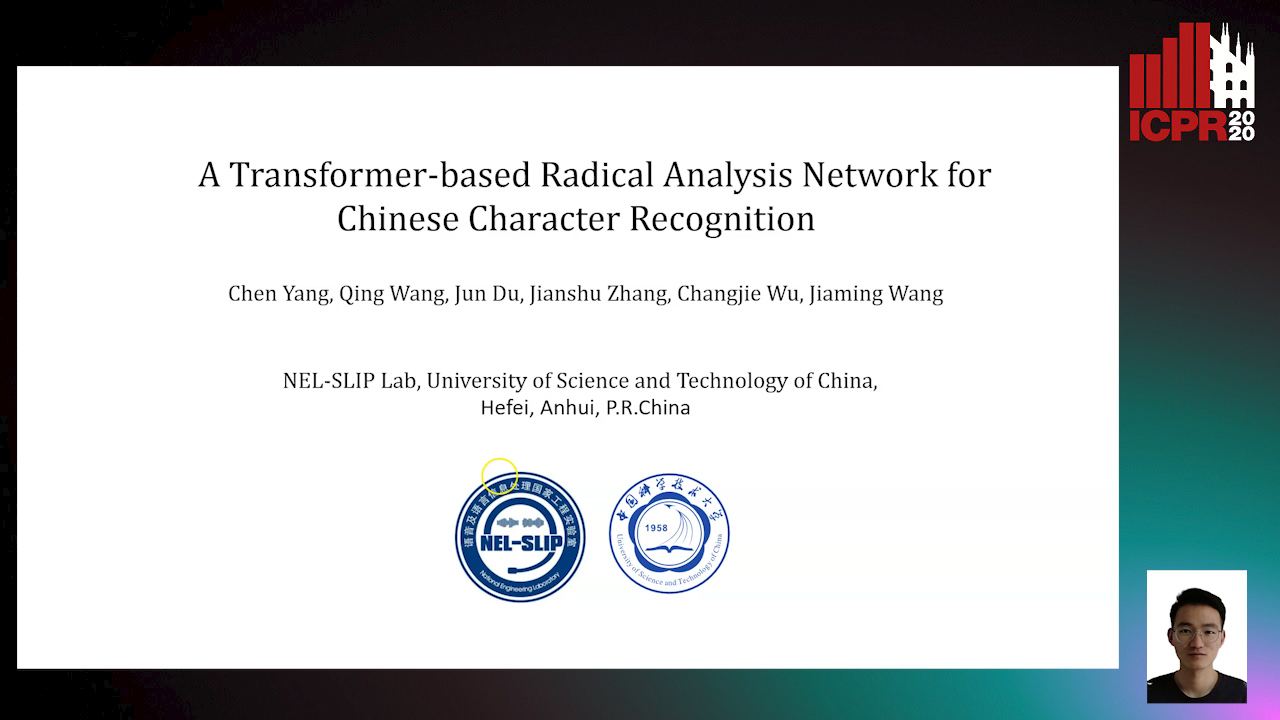
Auto-TLDR; Transformer-based Radical Analysis Network for Chinese Character Recognition
Abstract Slides Poster Similar
Face Anti-Spoofing Using Spatial Pyramid Pooling
Lei Shi, Zhuo Zhou, Zhenhua Guo

Auto-TLDR; Spatial Pyramid Pooling for Face Anti-Spoofing
Abstract Slides Poster Similar
Recurrent Deep Attention Network for Person Re-Identification
Changhao Wang, Jun Zhou, Xianfei Duan, Guanwen Zhang, Wei Zhou

Auto-TLDR; Recurrent Deep Attention Network for Person Re-identification
Abstract Slides Poster Similar
SAT-Net: Self-Attention and Temporal Fusion for Facial Action Unit Detection
Zhihua Li, Zheng Zhang, Lijun Yin

Auto-TLDR; Temporal Fusion and Self-Attention Network for Facial Action Unit Detection
Abstract Slides Poster Similar
FeatureNMS: Non-Maximum Suppression by Learning Feature Embeddings

Auto-TLDR; FeatureNMS: Non-Maximum Suppression for Multiple Object Detection
Abstract Slides Poster Similar
LODENet: A Holistic Approach to Offline Handwritten Chinese and Japanese Text Line Recognition
Huu Tin Hoang, Chun-Jen Peng, Hung Tran, Hung Le, Huy Hoang Nguyen
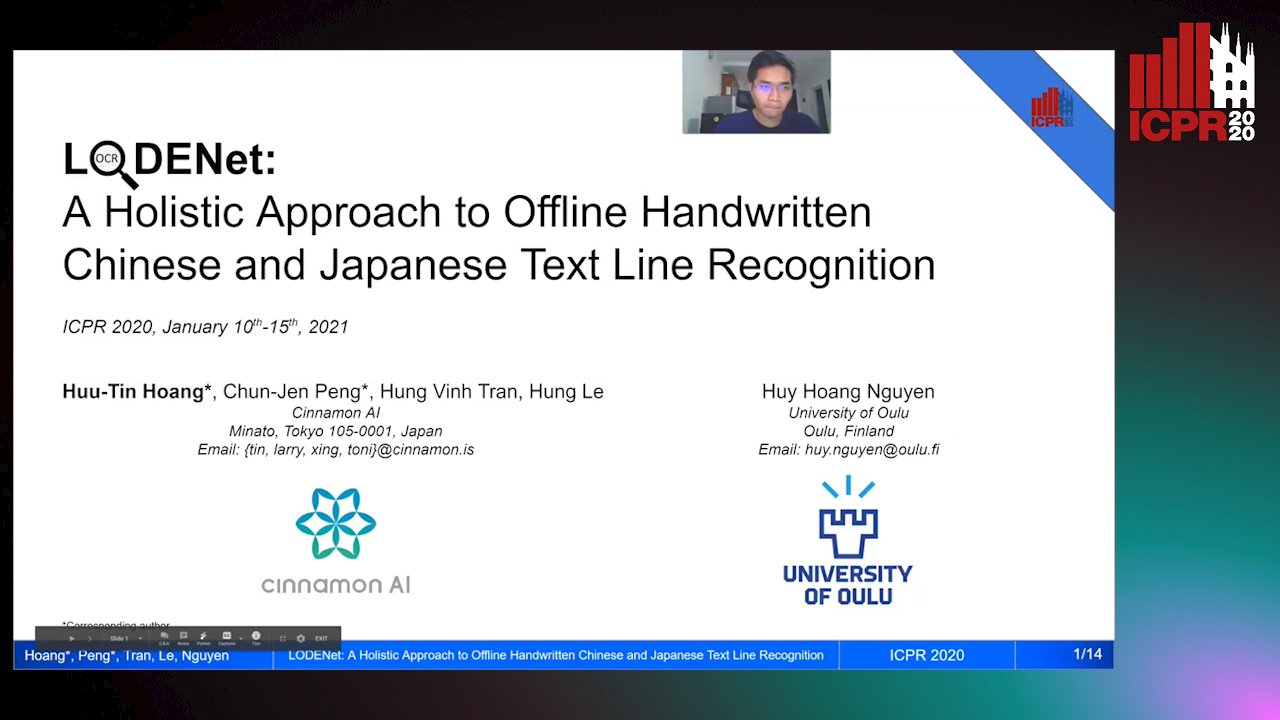
Auto-TLDR; Logographic DEComposition Encoding for Chinese and Japanese Text Line Recognition
Abstract Slides Poster Similar
Super-Resolution Guided Pore Detection for Fingerprint Recognition
Syeda Nyma Ferdous, Ali Dabouei, Jeremy Dawson, Nasser M. Nasarabadi

Auto-TLDR; Super-Resolution Generative Adversarial Network for Fingerprint Recognition Using Pore Features
Abstract Slides Poster Similar
A Fast and Accurate Object Detector for Handwritten Digit String Recognition
Jun Guo, Wenjing Wei, Yifeng Ma, Cong Peng

Auto-TLDR; ChipNet: An anchor-free object detector for handwritten digit string recognition
Abstract Slides Poster Similar
Automated Whiteboard Lecture Video Summarization by Content Region Detection and Representation
Bhargava Urala Kota, Alexander Stone, Kenny Davila, Srirangaraj Setlur, Venu Govindaraju

Auto-TLDR; A Framework for Summarizing Whiteboard Lecture Videos Using Feature Representations of Handwritten Content Regions
Sample-Aware Data Augmentor for Scene Text Recognition
Guanghao Meng, Tao Dai, Shudeng Wu, Bin Chen, Jian Lu, Yong Jiang, Shutao Xia
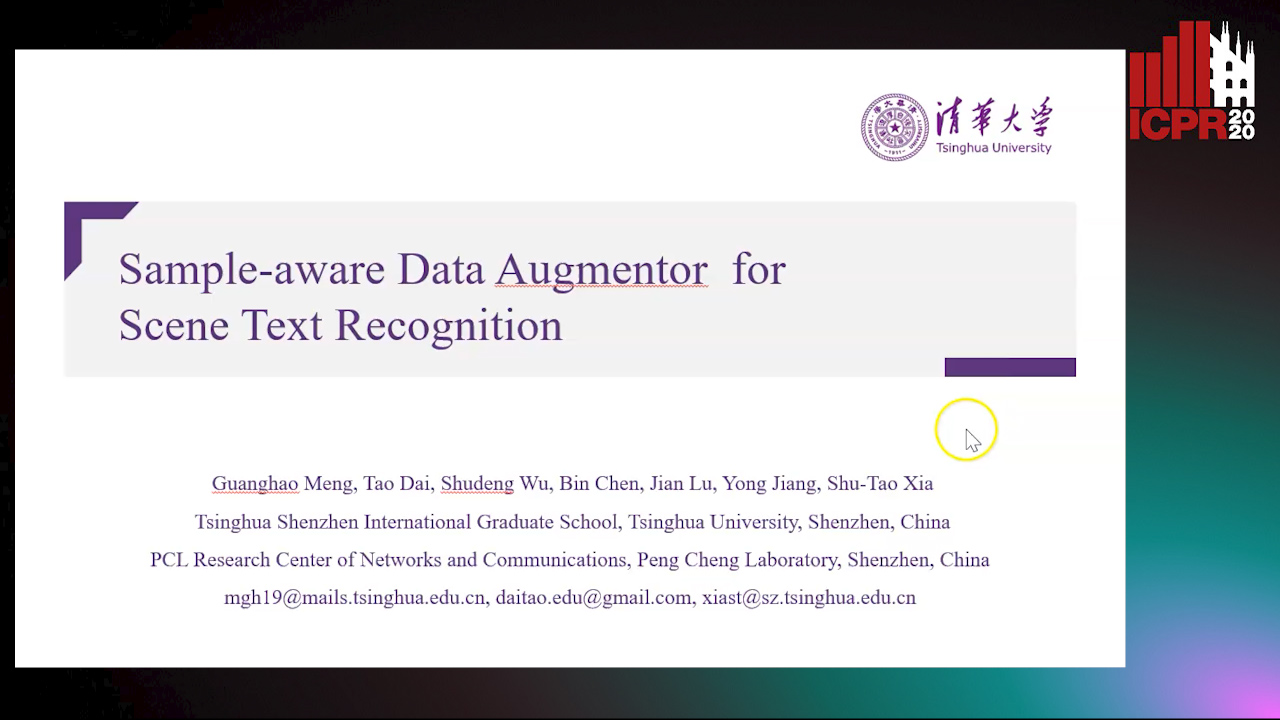
Auto-TLDR; Sample-Aware Data Augmentation for Scene Text Recognition
Abstract Slides Poster Similar
Siamese Dynamic Mask Estimation Network for Fast Video Object Segmentation
Dexiang Hong, Guorong Li, Kai Xu, Li Su, Qingming Huang

Auto-TLDR; Siamese Dynamic Mask Estimation for Video Object Segmentation
Abstract Slides Poster Similar
UHRSNet: A Semantic Segmentation Network Specifically for Ultra-High-Resolution Images
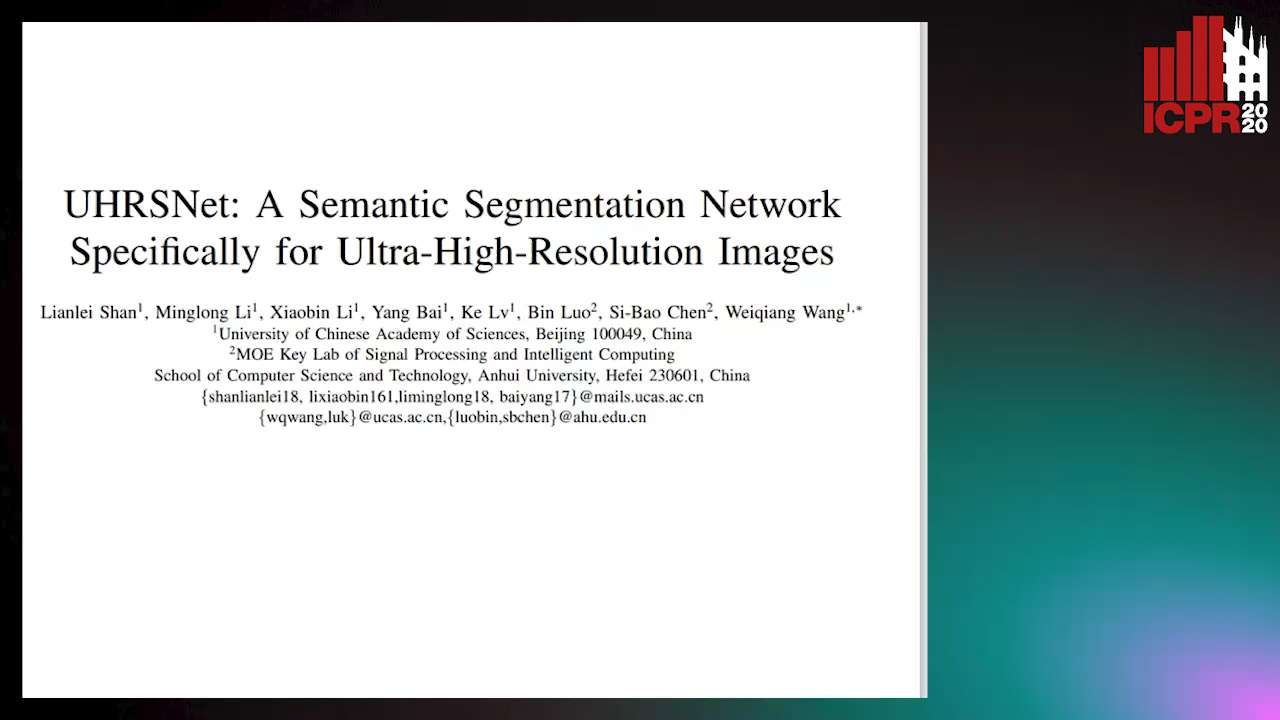
Auto-TLDR; Ultra-High-Resolution Segmentation with Local and Global Feature Fusion
VTT: Long-Term Visual Tracking with Transformers
Tianling Bian, Yang Hua, Tao Song, Zhengui Xue, Ruhui Ma, Neil Robertson, Haibing Guan

Auto-TLDR; Visual Tracking Transformer with transformers for long-term visual tracking
A Few-Shot Learning Approach for Historical Ciphered Manuscript Recognition
Mohamed Ali Souibgui, Alicia Fornés, Yousri Kessentini, Crina Tudor

Auto-TLDR; Handwritten Ciphers Recognition Using Few-Shot Object Detection
Deep Gait Relative Attribute Using a Signed Quadratic Contrastive Loss
Yuta Hayashi, Shehata Allam, Yasushi Makihara, Daigo Muramatsu, Yasushi Yagi

Auto-TLDR; Signal-Contrastive Loss for Gait Attributes Estimation
DFH-GAN: A Deep Face Hashing with Generative Adversarial Network
Bo Xiao, Lanxiang Zhou, Yifei Wang, Qiangfang Xu

Auto-TLDR; Deep Face Hashing with GAN for Face Image Retrieval
Abstract Slides Poster Similar